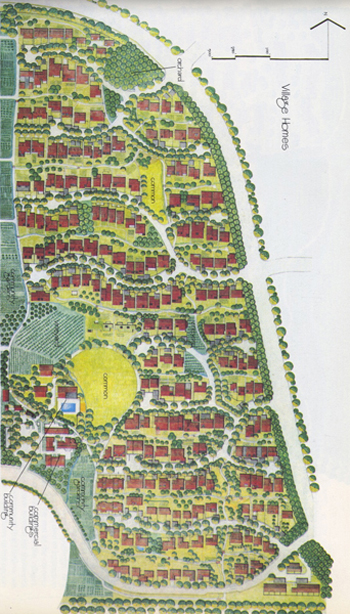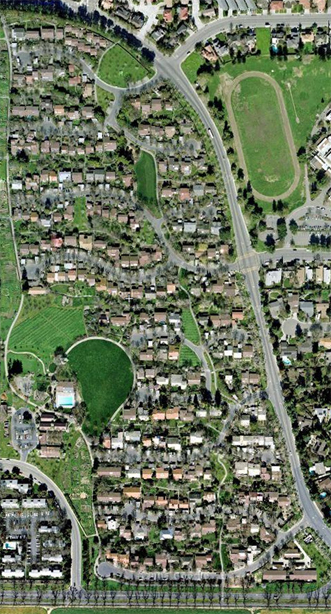Eco-Suburbia: the case of Village Homes
Village Homes, a planned community located in Davis, California, is one of the first ecologically-sensitive suburban developments in the United States. Designed and developed by Michael and Judy Corbett in the 1970s, Village Homes consists of 244 single-family and multi-family homes with a commercial center on 60 acres adjacent to the University of California.
Though developed in conformance with existing regulations using conventional financing and building practices, Village Homes incorporates an array of innovative site and building design features. Houses face an extensive open space network and conserve energy with solar water and space heating, natural cooling systems, and north-south orientation. A significant portion of the development is devoted to cooperatively maintained community landscape – most of it edible – including orchards, vineyards, shared gardens, and play areas. And Village Homes adopted and tested an open channel drainage system that at the time was unconventional in new suburban development.
Originally perceived by many as a high-risk project, Village Homes today is thought to be one of the most ecologically, socially, and economically successful developments in California – a “leading model of sustainable community design.” This website explores Village Homes’ significance as a planning and landscape architecture case study by reviewing the project’s successes and limitations. The following questions will be examined:
1. What planning and design strategies were used to meet the environmental and social goals of the project?
2. What are Village Homes’ successes? What are its shortcomings and limitations?
3. Has Village Homes proven to be a good model for ecologically-oriented development? Is the project a relevant model for future development?
4. What lessons does Village Homes reveal about barriers to ecological development?
For aerials of the Village Homes site and its context, please click here.
 |
 |
| Image Source: Francis 2003, x |